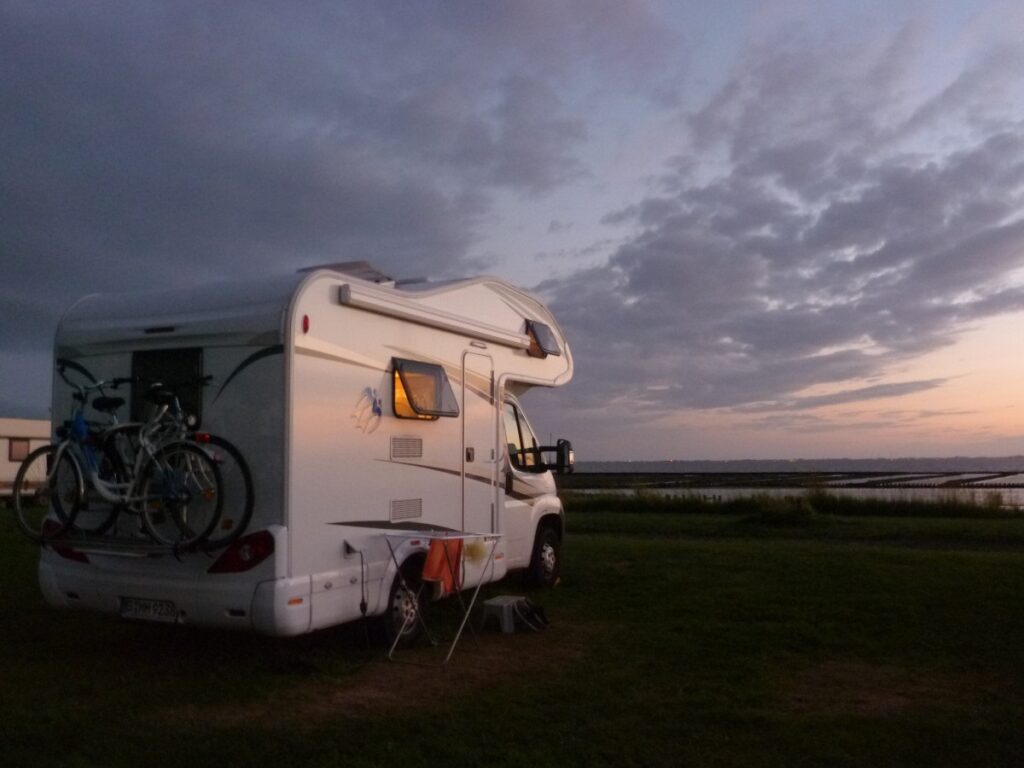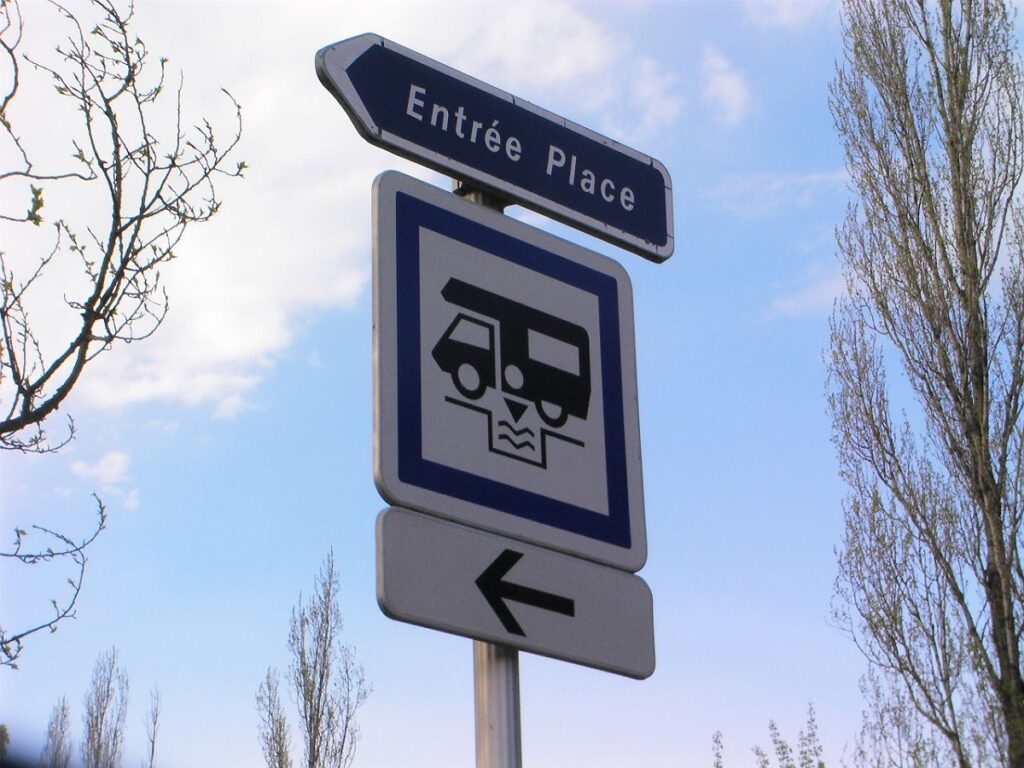
What if this year, instead of flying, we decided to explore France by motorhome, converted van, or camper van? Embarking on a road trip across the French regions means delving into their diversity, discovering world-renowned terroirs, and visiting must-see sites. It’s about seizing the freedom to travel, allowing for spontaneous stops to sleep wherever one wishes – almost – amidst breathtaking landscapes. France, the most visited country in the world, is brimming with treasures and fantastic places to see: you’ll run out of time to see and do everything. Are you considering exploring France by motorhome or camper van, meandering the country’s roads at a leisurely pace? Here’s how to plan your French road trip!
Ideas for routes in France by motorhome:
It’s impossible to list all the must-see places in France, as there are countless. When exploring France by motorhome, van, or camper van, you’ll need to select your stops and abandon the idea of seeing everything in one trip.
Your route will naturally depend on your vacation dates: you won’t explore France by motorhome for a week in the same way you would on a several-month road trip.
The Provence, Languedoc, Atlantic coast, Brittany coast, Cotentin dunes, D-Day landing beaches, Pyrenees, Massif Central, Alps, Alsace wine route, Loire Valley castles, national parks of Calanques, Vanoise, and Cévennes, regional parks of Vercors, Auvergne volcanoes, Luberon park, French Riviera, Ardèche mountains, Jura mountains, Vosges… The diversity is so vast that you’ll need several vacation years!
For a week, for example, stick to one region or department (to avoid spending too much time on the road) such as the pink granite coast in Brittany, the Landes, Drôme Provençale, Vermilion coast, Quiberon bay, Tarn Gorges, or Ardèche Gorges.
Here are some route ideas for longer stays, from 15 days to a month:
- Lyon, Grenoble, Chartreuse park, Chamonix-Mont-Blanc, Écrins park, Vercors park, Ardèche mountains.
- In the southeast: Avignon, Aix-en-Provence, Marseille, hiking in the Alpilles, Camargue, bivouac in the Verdon Gorges, Colorado Provençal (Luberon), Var coast.
- In Languedoc: Cévennes, Haut-Languedoc park, Navacelles circus, Salagou lake, Hérault Gorges, Montpellier, Sète.
- Toulouse, Canal du Midi, Black Mountain, Carcassonne City, Cathar Castles, Ariège Pyrenees park.
- Bordeaux, Pilat Dune, Arcachon Basin, Landes coast, wild coast, Oléron island, Ré island.
- From Paris: Cotentin high tides, D-Day landing beaches, Mont-Saint-Michel, Brittany coast villages, Rennes, Nantes.
- Grand-Est: Reims and the Champagne wine route, Vosges balloons, Strasbourg, Colmar, Mulhouse, Alsace wines, etc.
Our best advice is to limit yourself to a geographical area based on your dates. Exploring France by motorhome or camper van also depends on the season and weather: climates vary in France, and the weather can differ significantly from one department to another.
🔗 Read Also: 14 Best things to do in Carcassonne for first time visitors
How and where to rent a motorhome in France?
It’s now easy to rent a motorhome in France. How? By using platforms that connect renters (you) with individual motorhome owners, like Yescapa, for example.
How does it work?
- Start by choosing the motorhome in your city (e.g., Bordeaux, Nantes, Toulouse, Paris, Montpellier, or Marseille).
- Ensure you choose unlimited mileage, check the number of available beds, and see if traveling abroad is possible.
- Make an online rental request and share your travel details (dates, rental options, mileage, etc.) with the owner.
- If your request is accepted, after payment, you’ll get the owner’s contact details to arrange a first meeting.
- On departure day, show your driving license and pay the deposit.
- Conduct a vehicle inspection and sign a rental contract between both parties. After an unforgettable road trip, sign the return inspection report, and you’re done!
Driving in France by motorhome: traffic rules to know:

A motorhome is considered a car from a legal standpoint: when exploring France by motorhome, the same road traffic provisions apply as for a car:
- Driving license is the B license (up to 3.5 tons),
- On the road, each passenger must buckle their seatbelt,
- Do not be overloaded,
- Respect the highway code: same speed limits, same traffic rules as cars (note that local authorities can impose specific bans by municipal or prefectural decree in their territory: in this case, signs may be specific to motorhomes).
In France, motorhomes can park in regular car spaces. It’s allowed to sleep in your motorhome for bivouacking, but wild camping is strictly prohibited. The difference? The boundaries between the two practices are blurred. In essence, sleeping in a parking space is legal, setting up a stove or chairs on public roads is punishable. A tip for wild camping that we practice ourselves: ask the owner of a path or field if you can stay for a while on their property, and you won’t risk any fines!
Speed limits in France are:
- 50 km/h in urban areas,
- 80 km/h on two-way roads,
- 110 km/h on divided highways (100 km/h in bad weather),
- 130 km/h on motorways (110 km/h in bad weather).
In France, alcohol consumption is limited to 0.5 g/l (0.2 g/l for young drivers): watch your alcohol intake!
Finally, driving a motorhome naturally requires more precautions than a car due to its weight and size. Adjust your speed according to the road, especially since in France, drivers like speed and often flout the law as soon as they have a steering wheel in their hands.
Motorway tolls in France: what rate for your motorhome category?
Exploring France by motorhome or camper van allows you to use 1,073,500 kilometers of various routes, from national roads to private motorways. Except for Brittany and 2,600 kilometers of free motorway sections, like the A75 between Montpellier and Clermont-Ferrand, most motorways have been managed by private concessions (Vinci, ASF, Paris-Rhin-Rhône Motorways, etc.) since the highly criticized privatization waves launched from 2002 onwards: nearly 9,000 kilometers of motorways have toll sections.
For the rest, communication routes stretch over 9,600 kilometers of national roads, 376,000 kilometers of departmental roads, and 673,300 kilometers of municipal roads. Secondary roads are a good alternative, especially in summer, as the A7, A6, A8, and A9 in the south are often congested and prone to accidents.
If you need to take the motorway to explore France by motorhome, several toll payment systems are available: toll subscription, credit card, and cash (increasingly rare). The most common system is to stop at the toll booth to take a ticket, then stop at the motorway exit to pay the amount corresponding to the distance traveled.
The toll system is practical for those who regularly use the motorway, at least once a month. When exploring France by motorhome, you will be subject to the rate for vehicles between 2 and 3 meters in height and with a GVWR of less than 3.5 tons.
Here are some toll rates on major routes in 2020:
- Paris-Lyon (A6): €55.4
- Lyon-Montpellier (A7-A9): €43.2
- Marseille-Paris (A7-A6): €95.5
- Caen-Paris (A13): €24
- Nantes-Bordeaux (A83-A10): €44.7
- Bordeaux-Toulouse (A62): €31.9
- Bordeaux-Lyon (A89): €83.9
- Toulouse-Montpellier (A61): €36.7
- Lyon-Chamonix (A42-A40): €33.5
- Paris-Nice (A6-A7-A8): €122.9
- Aix-en-Provence-Nice (A8): €27.4
Crossing and exploring France by motorhome on the motorway is therefore quite expensive!
Motorhome areas in France: where to park?
As mentioned, wild camping in France is prohibited and regulated by a decree dated December 28, 2015. However, many places allow parking and sleeping on-site, especially in campsites, dedicated parking areas, and motorhome areas.
In a small converted van, you can try parking along beaches and in regional natural parks (making sure to be out of sight and away from any dwelling). As long as nothing prohibits parking, it’s always possible to stop and sleep there (don’t set up jacks, satellite antennas, or camping tables!).
Finally, if you’re tech-savvy travelers, a mobile app will be very useful: Park4night. This app shares spots – with photos of each spot – where travelers have been: natural spaces, fields, wild paths, beachfronts, forests, parking areas, motorhome areas, campsites: so you can see where to park based on your location, drastically reducing the risk of fines for wild camping. To know where to park and sleep peacefully, several websites can be helpful: Campercontact or Caramaps.
Preparing your trip to France by Motorhome:
Preparing your trip to explore France by motorhome also means thinking about everything you’ll need to bring in the vehicle. Sometimes we forget essential things in our preparations. Here’s a list of things to take and do before leaving:
- Sunglasses, sunscreen
- Swimsuits
- A range of mobile apps: Waze (GPS), Park4night, maps, and tourist guides
- Phone battery cables and chargers
- First aid kit (band-aids, antiseptic, Bétadine, etc.)
- Mosquito repellent
- Toilet paper
- Cleaning wipes
- Liquids (dishes, soap, shower, shampoo)
- Camping kitchenware
- Stove and gas refills
- Water bottles
- Small board games, dice, and card games (for rainy days)
- Sleeping bags and blankets, etc.
Remember to bring clothes suitable for the season; nights can sometimes be chilly even in summer in mountainous areas.
What is the best time to travel by motorhome in France?
One could answer, “all year round!” Undoubtedly, the best time to explore France by motorhome is spring and the autumn off-season: it’s not cold, it can even be hot in the South, and there are few tourists.
To explore northern France, it’s best to go in the summer. But climates vary in France: always check the weather depending on the region you’re visiting.




